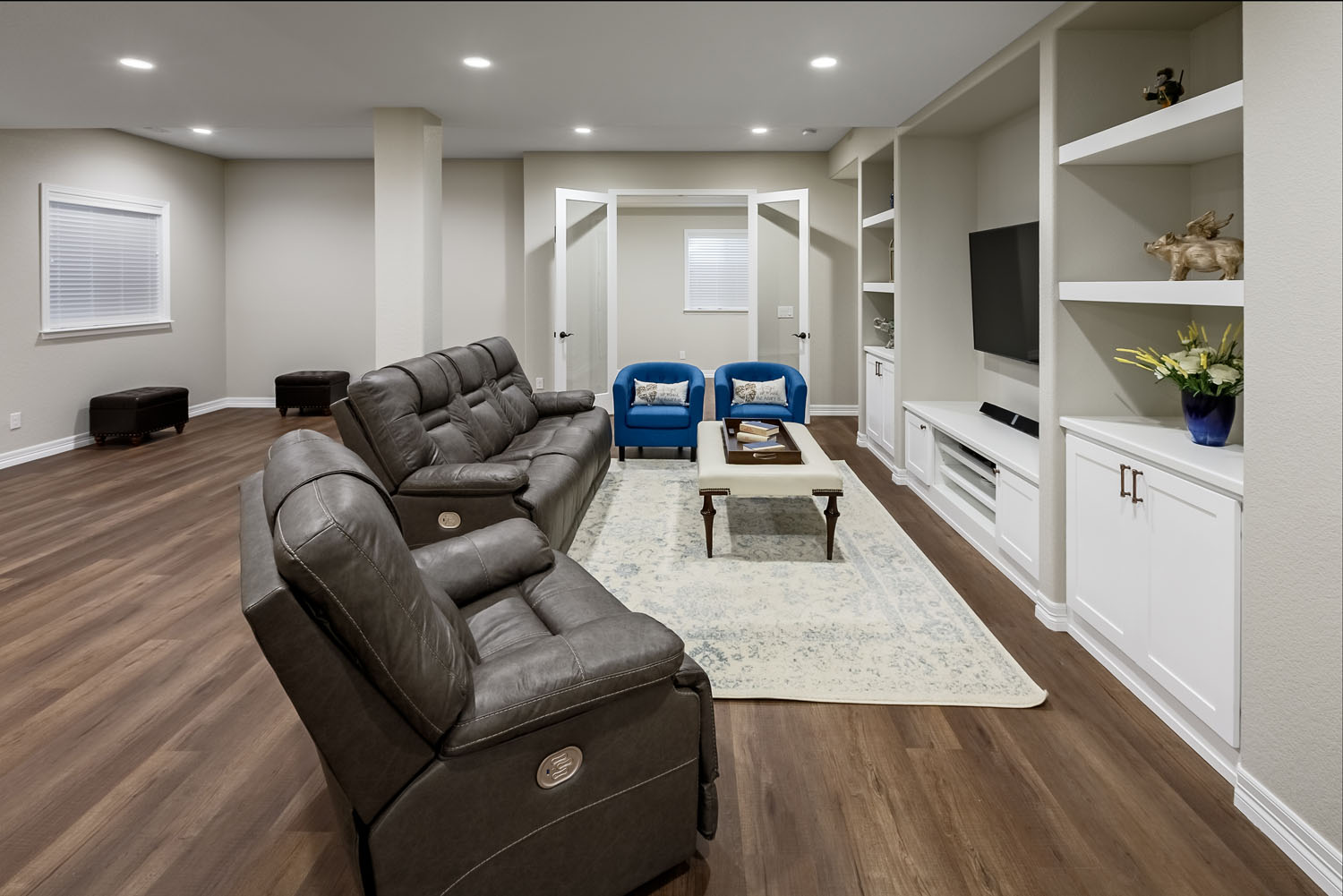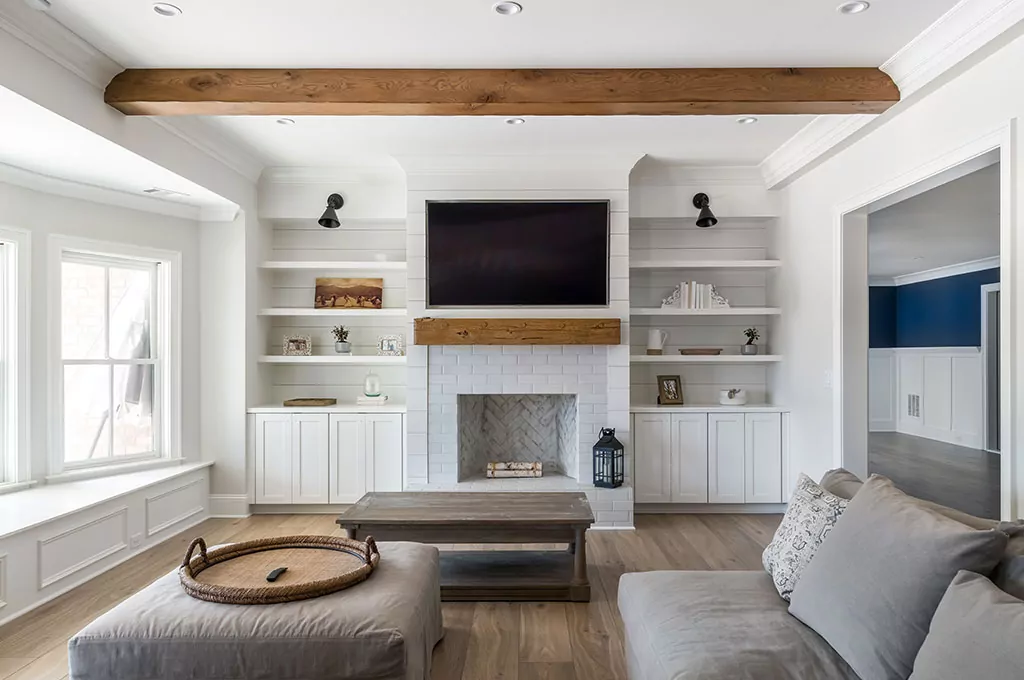Finishing your basement is one of the best ways to add usable space and increase the value of your home. Whether you’re dreaming of a cozy family room, a home theater, a guest suite, or even an income-generating apartment, having detailed and well-thought-out basement finishing plans is essential.
In this comprehensive guide, we’ll walk you through everything you need to know before, during, and after planning your basement renovation. From types of layouts to code compliance, budgeting, and design tips, you’ll be equipped to create a basement that’s both functional and beautiful.
What Are Basement Finishing Plans?
Basement finishing plans are detailed blueprints or layouts that guide the transformation of an unfinished basement into a livable, aesthetically pleasing space. These plans include:

- Room layout and functionality
- Wall placement and framing
- Electrical and plumbing locations
- HVAC and ventilation solutions
- Lighting and insulation strategies
- Finishes such as flooring, ceilings, and trim
These plans serve as a roadmap for contractors and homeowners alike, ensuring the project stays on time, within budget, and meets all code requirements.
Read More: How and Why to Add an Egress Window to Your Basement
Benefits of Finishing Your Basement
Before diving into planning specifics, it’s important to understand why finishing your basement is a smart move:
- Increased Home Value: Finished basements offer high ROI—often 70% or more.
- More Living Space: Gain additional bedrooms, offices, playrooms, or media centers.
- Extra Income: Basement apartments can provide rental income.
- Energy Efficiency: Properly insulated basements improve home heating/cooling.
- Customization: Tailor the space to your family’s specific needs.
Read More: A Remodeler’s Guide to Basement Egress: Everything You Need to Know
Types of Basement Finishing Plans
Here are the most popular styles of finished basement layouts you can plan for:
1. Open Concept Living Space
- Ideal for entertainment rooms or game areas
- Includes couches, TVs, pool tables, and bar areas
- Minimal interior walls to maximize open flow
Read More: Basement Sliding Door Ideas: Stylish Solutions for Light, Space & Privacy
2. Multi-Room Layout
- Ideal for families or multi-use purposes
- Includes bedrooms, bathrooms, storage, and living areas
- Offers privacy and better noise control
Read More: 21 Basement Sliding Door Ideas to Brighten and Elevate Your Lower Level
3. Basement Apartment Suite
- Perfect for in-laws or rental income
- Includes separate entrance, kitchen, bedroom, bathroom, and living room
- Must meet local building codes and egress requirements
Read More: Basement Patio Door Ideas: Brighten and Open Up Your Lower Level
4. Home Gym or Studio
- Personalized space for fitness or hobbies
- Includes durable flooring, mirrors, equipment zones
- Requires good ventilation and lighting
Read More: Benefits of Recessed Lights in the Basement
5. Home Theater Room
- Enclosed room with blackout options
- Soundproofed walls, projector/screen setup, tiered seating
Read More: Adding Lights to an Existing Circuit While Finishing the Basement: A Complete DIY Guide
6. Home Office or Remote Workspace
- Quiet, distraction-free space
- Can be paired with a library or reading nook
Read More: How to Do Basement Lighting the Right Way
Key Components of a Basement Finishing Plan
Before framing a single wall, you need to include the following in your basement plan:
1. Moisture Control
- Install vapor barriers behind walls
- Inspect for water leaks or cracks
- Consider interior drainage or sump pump systems
Read More: Basement Lighting for Low Ceilings: Tips and Ideas to Brighten Your Space
2. Framing and Insulation
- Use pressure-treated lumber for framing near floors
- Insulate with spray foam or rigid foam for temperature control
- Add soundproofing insulation between floors
Read More: Top 9 Basement Lighting Ideas to Brighten Your Space
3. HVAC and Ventilation
- Extend your home’s HVAC system or add mini-splits
- Ensure each room is ventilated to prevent mold
- Install return vents for proper air circulation
Read More: Top Basement Lighting Ideas to Brighten Up Your Space
4. Lighting and Electrical
- Plan circuits based on room function (kitchen vs. bedroom)
- Use recessed lights for low ceilings
- Include plenty of outlets (code usually requires one every 12 feet of wall)
Read More: Lighting Help for Our Low Ceiling Basement: Bright Ideas That Work
5. Plumbing (if needed)
- Place bathrooms or kitchens near existing plumbing lines
- Consider a sump pump for basement bathrooms
- Install backflow valves for safety
Read More: Create a Light & Bright Basement With These Remodeling Tips
6. Ceilings and Floors
- Drop ceilings allow easy access to plumbing/electrical
- Drywall offers a more finished look
- Use water-resistant flooring: vinyl plank, tile, sealed concrete
Read More: The Ultimate Guide to Basement Remodeling Lighting
Sample Basement Finishing Plan (Layout Concept)
Here’s a simple example layout for a 1,000 sq. ft. basement:

pgsqlCopyEdit|——————————————|
| Home Theater | Bedroom 1 |
| |———————|
| Wet Bar | Bathroom |
|———————|———————|
| Office | Storage |
|——————————————|
This layout includes entertainment, relaxation, work, and storage space—making it perfect for growing families.
Read More: What Are the Best Overhead Lights for an Unfinished Basement?
Tips for Planning a Finished Basement
- Start with a Floor Plan: Use tools like RoomSketcher or SmartDraw.
- Consult Local Codes: Know what’s required for egress windows, ceiling height, fireproofing, etc.
- Hire Professionals: Especially for electrical, plumbing, or structural work.
- Prioritize Function Over Form: Plan how the space will be used daily before choosing finishes.
- Consider Noise Levels: Add insulation and soft materials in areas like bedrooms or offices.
- Leave Access to Utilities: Don’t box in your water heater or electrical panel.
- Think Long-Term: Will your family grow? Will you sell the house? Design with future needs in mind.
Read More: Basement Lighting Ideas for a Brighter Space: Transforming Dark into Dazzling
Basement Finishing Plan Cost Breakdown
Costs vary based on size, location, materials, and complexity. Here’s a general guide:
| Component | Estimated Cost |
|---|---|
| Framing & Drywall | $3,000 – $8,000 |
| Flooring | $2,000 – $7,000 |
| Electrical & Lighting | $1,500 – $5,000 |
| Plumbing (if applicable) | $2,000 – $10,000 |
| HVAC/Insulation | $1,500 – $6,000 |
| Painting & Finishes | $1,000 – $3,000 |
| Total Average Cost | $15,000 – $50,000+ |
Tip: A detailed finishing plan will help you avoid overspending and allow accurate contractor estimates.
Read More: Considerations When Finishing Your Basement: The Ultimate Homeowner’s Guide
Basement Finishing: Permit and Code Considerations
Depending on your area, you may need permits for:
- Framing and drywall installation
- Electrical or plumbing work
- HVAC changes
- Egress window installation
Always check with your local building department before starting. Hiring a contractor familiar with local codes can help ensure compliance and avoid costly redos.
Read More: HVAC Upgrades to Consider When Finishing Your Basement: A Complete Guide
Tools and Software for Basement Planning
- RoomSketcher – Beginner-friendly with 3D views
- SmartDraw – Offers a variety of floor plan templates
- SketchUp – Great for DIYers and professionals
- Home Designer Suite by Chief Architect – Pro-grade software
Read More: Best Way to Heat and Cool a Basement: Expert Guide for Year-Round Comfort
Final Thoughts
Creating effective basement finishing plans is the foundation of a successful remodel. From choosing the right layout to following code requirements and budgeting smartly, every detail counts. A well-planned basement can become your favorite part of the house, offering comfort, functionality, and value for years to come.
If you’re unsure where to begin, consider hiring a contractor or designer with experience in basement remodels. And remember, the planning phase is just as important as construction—so take the time to get it right.
